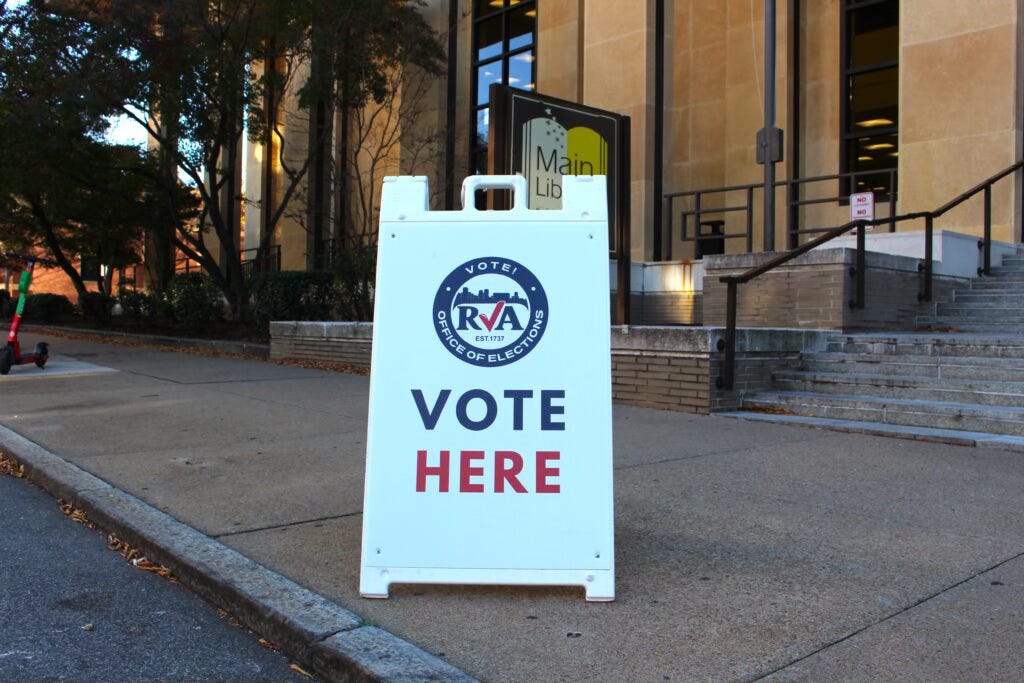Up and Down the Ballot
Dems should run in ALL districts
By Craig Seligman
Scrutinizing those endless red-versus-blue maps might give you the impression that Democrats all live in cities. Across the country, there are rural districts so red that the Democrats don’t even bother to field a candidate there—a terrible strategy, if you can even call it that. An unopposed Republican never has to defend even the most outrageously extreme positions. Worse, the party can then divert its funds to other, more competitive races. It’s time to start running Democrats in ALL races, ALL districts.
Even the reddest districts have more Democrats than you might think—and, with changing demographics, growing numbers of them. These Dems feel the party’s lack of support acutely, and all too often, when they don’t have a local candidate to vote for, they stay home. But when a Democrat runs, they’re much more likely to go to the polls. Even if their candidate doesn’t win (this time), their collective votes make a huge difference in up-ticket races, from governor to senator to president.
Democrats are finally starting to address this sad situation. Last year, Virginia’s grassroots Rural GroundGame looked at the state’s 29 uncontested state legislature races and, in partnership with Swing Blue Alliance and Red2Blue, found Democrats to run in 19 of them. They didn’t win, but most did better than predicted and, more important, they forced Republicans to spend money where they hadn’t previously, weakening them in other, tighter races. This dealt the GOP a mortal wound that allowed the Democrats to hold the State Senate and retake the House of Delegates, a tremendous win.
Candidate recruitment has become one of the richest contributions to democracy that grassroots groups can make. The work is mostly online. You choose a district or a municipality, and then Google groups that might yield good prospects. These include boards of a local non-profits, PTA leaders, volunteer coaches, and so forth. Once you have a name, you feed it into VoteBuilder, the national database maintained by NGP VAN for the Democratic Party, to find the person’s age, contact information, and, of course, party affiliation.
Then using LinkedIn and Google, find out everything you can about the potential candidate—not only their activities and accomplishments but also any red flags (like a criminal conviction) that might disqualify them. The process is both painstaking and invaluable, which is why a lot of volunteers have come to love it.
Once you’ve identified a good prospect, you turn the name over to the group you’re working with, such as the local Democratic committee. They’ll generally get in touch themselves—after all, they live in the same community and likely know these people—though occasionally volunteers help out with the calling, as Red2Blue and Swing Blue Alliance did last year in Virginia.
“The best part,” says Debra Taylor, co-leader of Red2Blue, “is that you have tangible results. It doesn’t take a study to tell whether what you did worked.” Last year in Virginia, the groups came up with more than 700 potential candidates, and with the 19 who agreed to run, the party started building a bench: many of them will be running again.
Now Red2Blue and Swing Blue Alliance are partnering with Turn PA Blue to identify candidates in Pennsylvania. If it’s an activity you or your volunteers want to get involved in, Red2Blue’s Michelle Kedem (michelle.kedem@gmail.com) can tell you more.
Craig Seligman has written for and edited at a host of magazines, journals, newspapers, and websites. He is the author of Who Does That Bitch Think She Is?: Doris Fish and the Rise of Drag (2023). He lives in Brooklyn and is a co-leader of Red2Blue.




